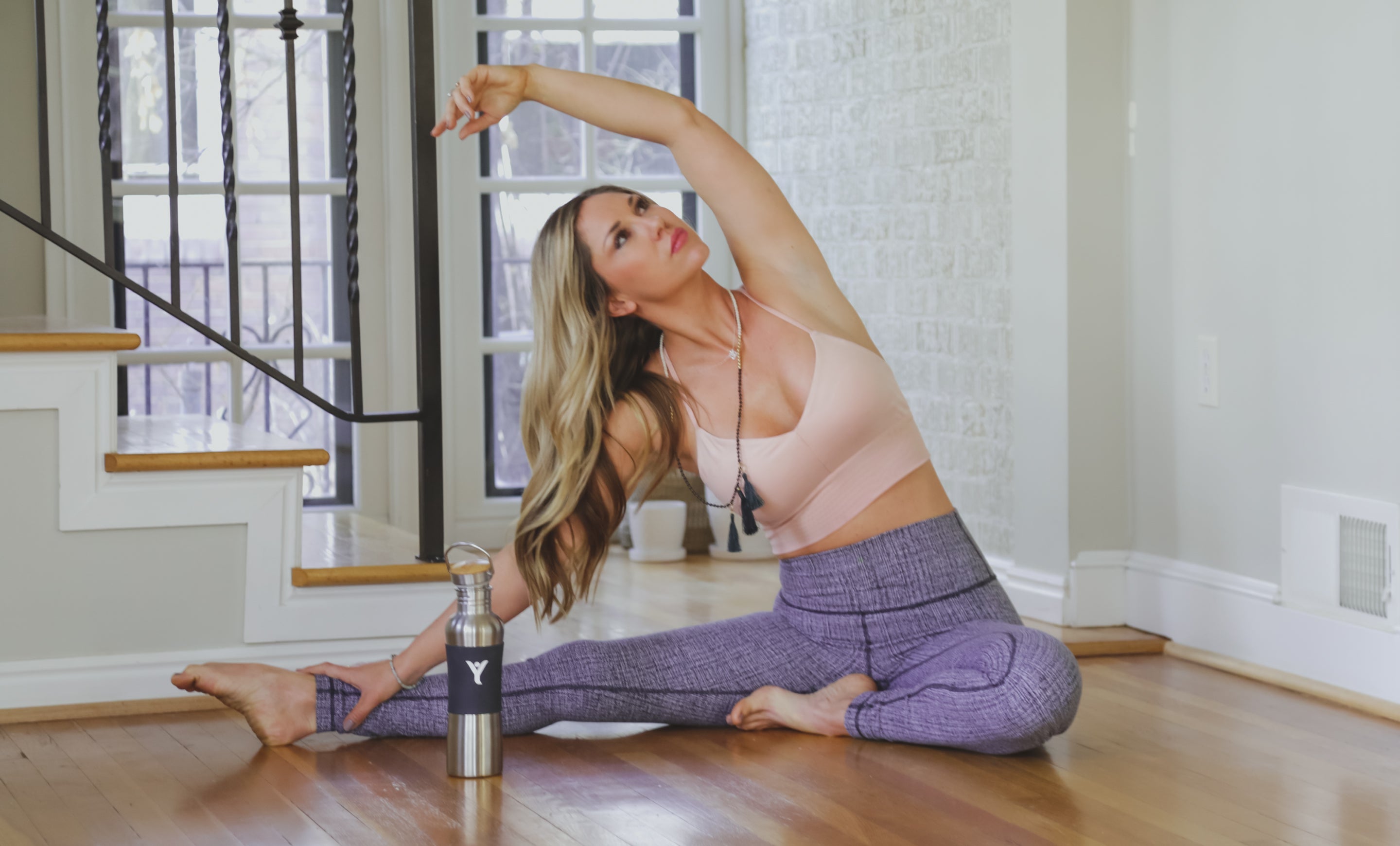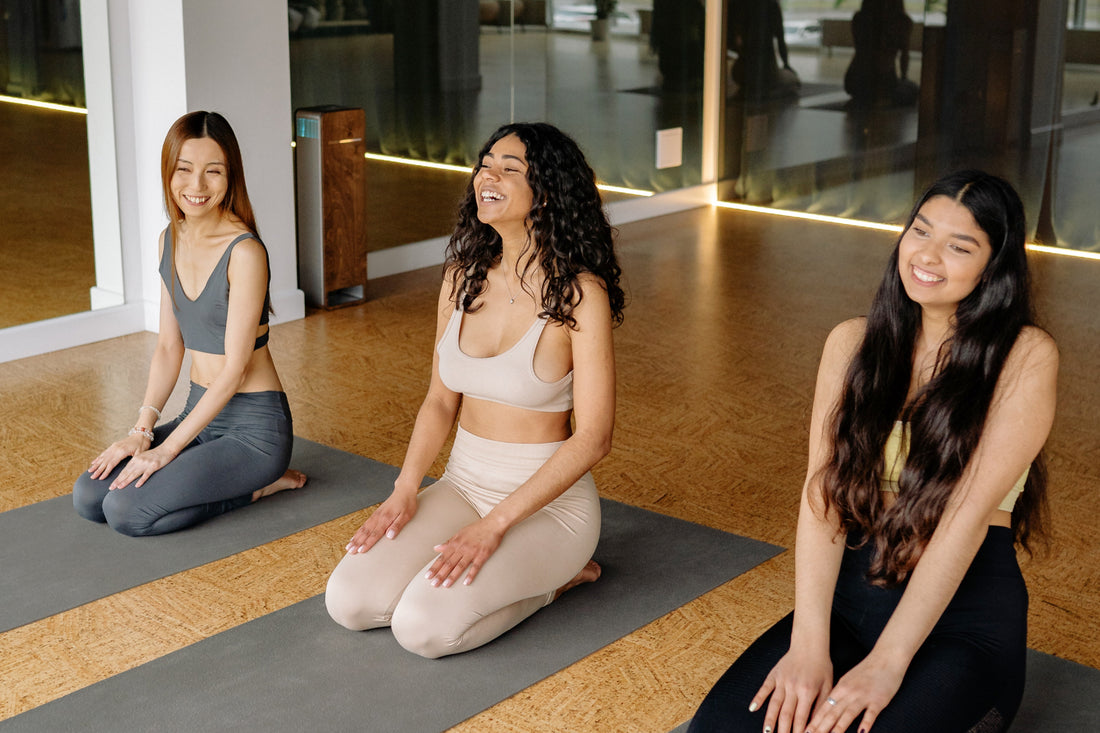La práctica regular de yoga, con la guía de un profesor experimentado, es una excelente manera de cuidar la columna vertebral y protegerse del dolor y las lesiones de espalda.
Permanecer sentado frente a un escritorio durante largos períodos de tiempo es una causa común de dolor lumbar , al igual que levantar y transportar objetos pesados sin el conocimiento del cuerpo ni el cuidado personal necesarios para realizar dicha actividad física. El dolor también puede extenderse hasta la zona de la columna torácica y hasta el cuello, donde la columna cervical y los músculos que la rodean son especialmente vulnerables cuando pasamos mucho tiempo mirando una pantalla.
Muchas personas sufren dolor de espalda. A veces, este dolor se agrava y provoca dolores de cabeza , mareos e incluso náuseas. Las clases de yoga suelen ser beneficiosas, pero también es importante cuidarse día a día.
Pruebe estas cinco posturas de yoga todos los días para proteger su columna vertebral.
1. Kumbhakasana (Plancha)

Mantén la posición inicialmente durante 30 segundos y aumenta gradualmente hasta mantenerla durante 2 minutos.
Una clave para tener una espalda sana es un núcleo fuerte.
El core no son solo los músculos abdominales que forman el six-pack; todos los músculos principales y secundarios del abdomen y la espalda, así como los glúteos y los músculos de la cadera, son parte del core. Pensar en el core como todos estos músculos trabajando juntos puede ayudarte a entender cómo proteger tu columna en cada posición, ya sea que estés sentado, de pie, acostado o en movimiento.
La plancha alta es una excelente postura para desarrollar la fuerza y la estabilidad del centro del cuerpo, ya que todos los músculos del centro del cuerpo trabajan juntos para sostener la columna.
Consejo: Coloque las manos directamente debajo de los hombros y presione los talones hacia atrás, lejos de usted; levante el abdomen inferior y redondee los hombros ligeramente como si estuviera empujando algo lejos de usted.
2. Práctica de Uddiyana Bandha (trabajo básico en el escritorio)

Repita esto cinco veces antes de permitir que la columna vuelva a una posición neutra.
Uddiyana Bandha es el "bloqueo central" en yoga y es vital para generar calor, crear energía y sostener la columna vertebral. Puedes practicar el uso de este bandha para mejorar tu postura mientras estás sentado.
Siéntese derecho, con los pies apoyados en el suelo. Contraiga suavemente el abdomen inferior (sensación de "tirón hacia arriba" en la zona debajo del ombligo). A continuación, utilice esta contracción para llevar la pelvis hacia delante, lo que redondeará la zona lumbar. Y, a continuación, manteniendo la contracción, lleve la pelvis hacia atrás, de modo que la zona lumbar se hunda ligeramente.
Consejo: Mantenga los hombros quietos para estimular que el movimiento provenga de la parte inferior del abdomen.
3. Ardha Matsyendrasana (Postura del medio señor de los peces)

Mantenga la posición durante cinco respiraciones de cada lado.
Además de fortalecer los músculos, es importante crear flexibilidad para evitar la rigidez y reducir las posibilidades de lesiones.
No solemos girar durante nuestra vida diaria, y mover la columna de esta manera puede ayudar a eliminar la tensión y mejorar la movilidad.
Sentado en el suelo, mantenga las caderas niveladas y estire una pierna mientras acerca el otro pie. Gire hacia la pierna doblada para mirar hacia atrás. Puede colocar el codo opuesto en la parte exterior de la rodilla o simplemente usar la mano para sujetar la rodilla. La otra mano descansa en el suelo detrás de usted para apoyarse.
Consejo: Inhale y extienda la columna hacia arriba antes de realizar el giro.
4. Padangushtasana (Postura de la mano al dedo gordo del pie)

Mantenga esta posición durante cinco respiraciones.
Esta es una flexión hacia adelante simple para estirar los isquiotibiales.
Una mayor flexibilidad en los isquiotibiales puede reducir la tensión en la espalda baja, ya que podrá moverse con más libertad sin tener que redondear la columna para compensar la rigidez de los isquiotibiales.
Los estiramientos de los isquiotibiales solo son buenos para la columna si la mantienes larga. mientras te estiras; así que en lugar de alcanzar inmediatamente los dedos de los pies, dóblate hacia adelante solo lo más que puedas sin redondear la espalda.
Consejo: Lleve las manos a las piernas en lugar de a los dedos de los pies para disminuir la intensidad del pliegue.
5. Estiramiento lateral de pie

Mantenga la posición durante cinco respiraciones de cada lado.
Por último, al igual que ocurre con la torsión espinal, el estiramiento lateral de la espalda aumenta la flexibilidad y el rango de movimiento.
De pie, distribuye el peso uniformemente entre los pies. Estira los brazos por encima de la cabeza, entrelaza los dedos y, sin hundir las costillas, inclínate hacia un lado. Lleva la barbilla hacia el codo superior.
Consejo: Mantenga el centro del cuerpo contraído para mantener la columna alargada, levantándola y estirándola, en lugar de estirarla y colapsar.






